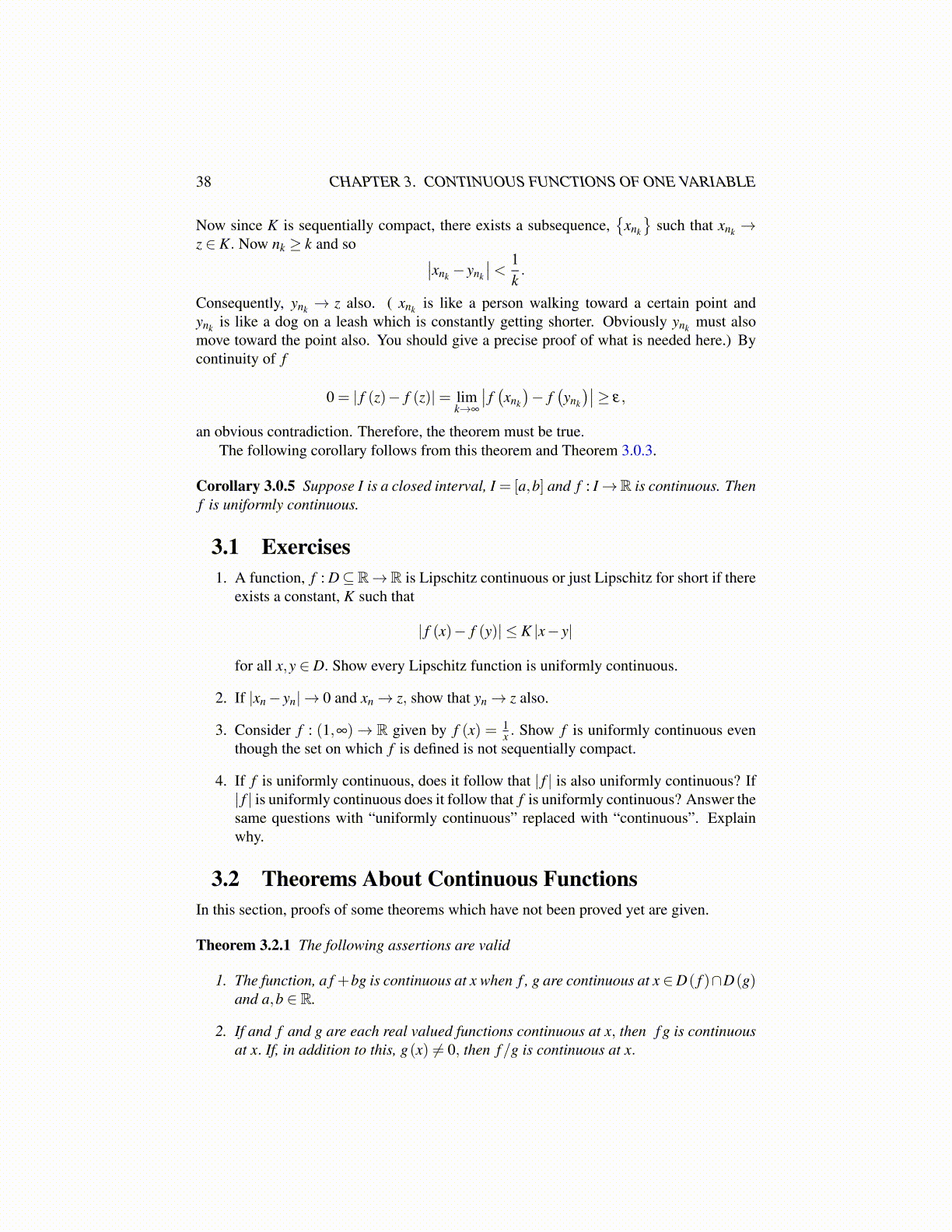
38 CHAPTER 3. CONTINUOUS FUNCTIONS OF ONE VARIABLE
Now since K is sequentially compact, there exists a subsequence,{
xnk
}such that xnk →
z ∈ K. Now nk ≥ k and so ∣∣xnk − ynk
∣∣< 1k.
Consequently, ynk → z also. ( xnk is like a person walking toward a certain point andynk is like a dog on a leash which is constantly getting shorter. Obviously ynk must alsomove toward the point also. You should give a precise proof of what is needed here.) Bycontinuity of f
0 = | f (z)− f (z)|= limk→∞
∣∣ f (xnk
)− f
(ynk
)∣∣≥ ε,
an obvious contradiction. Therefore, the theorem must be true.The following corollary follows from this theorem and Theorem 3.0.3.
Corollary 3.0.5 Suppose I is a closed interval, I = [a,b] and f : I→R is continuous. Thenf is uniformly continuous.
3.1 Exercises1. A function, f : D⊆R→R is Lipschitz continuous or just Lipschitz for short if there
exists a constant, K such that
| f (x)− f (y)| ≤ K |x− y|
for all x,y ∈ D. Show every Lipschitz function is uniformly continuous.
2. If |xn− yn| → 0 and xn→ z, show that yn→ z also.
3. Consider f : (1,∞)→ R given by f (x) = 1x . Show f is uniformly continuous even
though the set on which f is defined is not sequentially compact.
4. If f is uniformly continuous, does it follow that | f | is also uniformly continuous? If| f | is uniformly continuous does it follow that f is uniformly continuous? Answer thesame questions with “uniformly continuous” replaced with “continuous”. Explainwhy.
3.2 Theorems About Continuous FunctionsIn this section, proofs of some theorems which have not been proved yet are given.
Theorem 3.2.1 The following assertions are valid
1. The function, a f +bg is continuous at x when f , g are continuous at x ∈D( f )∩D(g)and a,b ∈ R.
2. If and f and g are each real valued functions continuous at x, then f g is continuousat x. If, in addition to this, g(x) ̸= 0, then f/g is continuous at x.